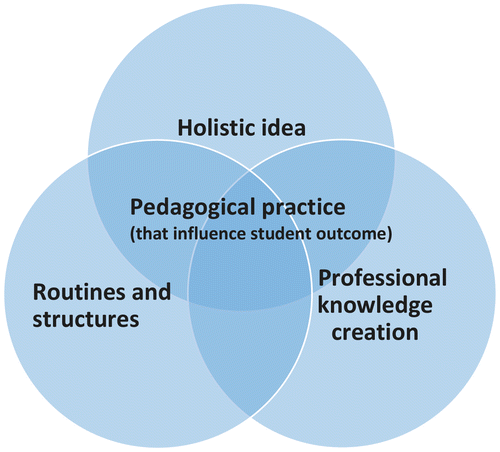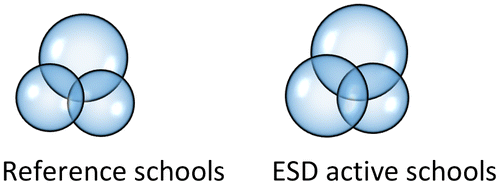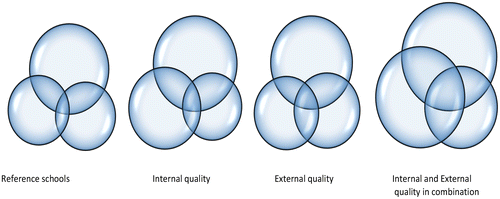Figures & data
Figure 1. Interpretation of the Scherp model used to visualise the school organisation in this study.

Table 1. The survey items covering the dimensions and their coherence in the Scherp model of school organisation.
Figure 2. Visualisation of teachers’ holistic perception of the structure of their school organisation in terms of Scherp’s model. Comparison between reference schools and ESD-active schools. The top circle represents the Holism dimension, the circle to the left represents the Routines and structures dimension and the circle to the right the Professional knowledge creation dimension.

Figure 3. Visualisation of teachers’ holistic perception of the structure of their school organisation in terms of Scherp’s model. ESD-active schools divided into either award or interdisciplinary implementation strategies or a combination of both. The top circle represents the holistic vision, the circle to the left represents the Routines and structures dimension and the circle to the right the Professional knowledge creation dimension.

Figure 4. Visualisation of teachers’ holistic perception of the structure of their school organisation in terms of Scherp’s model. ESD-active schools divided either into internal or external general quality approaches or a combination of both. The top circle represents the Holistic dimension, the circle to the left represents the Routines and structures dimension and the circle to the right the Professional knowledge creation dimension.

Figure 5. Visualisation of teachers’ holistic perception of the structure of their school organisation in terms of Scherp’s model. Comparing five school improvement processes: reference schools, A, internal general quality approaches and award implementation strategies; B external general quality approaches and interdisciplinary implementation strategies; C, internal general quality approaches and interdisciplinary implementation strategies; D internal and external general quality approaches in addition toa combined award and interdisciplinary strategy. The top circle represents the holistic vision, the circle to the left represents the Routines and structures dimension and the circle to the right the Professional knowledge creation dimension.

